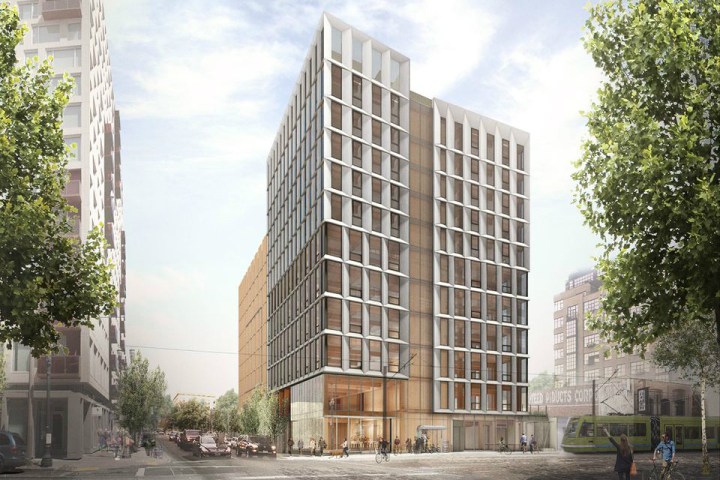
Timber is becoming an increasingly attractive construction material thanks to advances in wood-binding technologies. This week, city officials in Portland, Oregon, approved a construction permit for the United States’ first all-wood high-rise.
The developer is set to begin construction of the 11-story building, called Framework, this fall. Once completed, the complex will house subsidized apartments and offices for Albina Community Bank and Beneficial State Bank.
Framework will utilize a technology known as cross-laminated timber (CLT). These CLT panels are constructed from small wooden planks bound to one another by a polyurethane adhesive, giving them the strength of traditional construction materials such as concrete and steel.
In fact, tests have show that CLT designs can withstand large-scale earthquakes. Researchers at Portland State University and Oregon State University used seismic testing to verify the structural integrity of Framework’s design.
State officials have high hopes for the future of CLT and believe the technology could bolster the floundering regional timber industry. Pacific Northwest logging has struggled in recent years due to trade deals, automation, and government regulation, among other factors.
Oregon has invested heavily into CLT technologies, including a rather robust $150,000 grant to help a Douglas County logging company, D.R. Johnson Lumber Co., create its manufacturing line. Currently, CLT is manufactured predominantly in Europe and Canada, but the Framework high-rise will source the bulk of its CLT panels locally from D.R. Johnson.
Wood has many benefits over traditional construction materials. CLT structures can be erected faster than concrete and steel structures, and, most importantly, wood is far more environmentally friendly. Carbon dioxide is a chief byproduct in the creation of iron, steel, and the non-metallic minerals that are the raw components in concrete. It is estimated that these materials contribute as much to climate change as all of the automobiles on the earth combined.
This initiative and others like it may very well lay the groundwork for more ambitious wood construction projects in the future.


